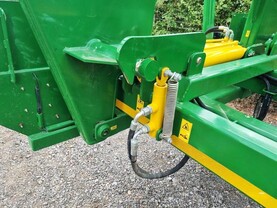Harvesting under way
Combines have made some progress in winter barley up and down the country over the past week or so. Performance so far is more variable than one might like, with very occasional yields below 3t/ac but relatively few, so far, getting above 4t/ac.
This is somewhat disappointing given the promise up to fairly recently. Grain fill would appear to be disappointing in some of these crops and this is now reflected in both yield and quality. Some growers report hybrids as doing better but it’s early days yet for any conclusions. There may now be cause for concern regarding grain fill in other cereals as crops appear to be ripening very quickly.
However, many winter barley crops are still a while away from being ripe and these do not appear to have filling issues and they are just later ripening. But their story will only be known after the combines have gone.
Straw
Yields seem good so far with some sprayed-off fields being baled directly behind the combine. Straw is tending to be a bit rare at cutting and this is slowing combine progress. It also means leaving straw a few days before baling.
It remains good advice to chop straw on the turning headlands in all fields, especially where crops are regularly performing poorly and where soil is tight and difficult. A few years of doing this can transform this part of your fields. It also helps in saving the straw on the rest of the field and having choppers working can act like smoke signals locally.
Demand for straw seems good thus far and while it will be needed for feeding, it is unlikely to be needed for fodder. However, there is less straw about as the grain acreage is well down on a few years ago and livestock numbers are higher. Prices so far are tending to be in the region of €20 to €25 /4x4 bale, depending on location.
OSR desiccation
Many rape crops have developed a brown cast across the top and so it’s time to consider desiccation. Use the guidelines to get spray timings right as one can spray too early. Inspect crops and look for visible change in seed colour from green to brown.
Assess seed colour in 20 pods on the main rachime in different places in the crop. When at least two-thirds of the seeds in at least 15 pods have turned brown or black the crop is at earliest correct stage for desiccation. These changes can happen rapidly so regular inspection may be necessary.
Use plenty water (200 l/ha or more) with up to 2.0 kg/ha of Roundup Powermax or 3–4 l/ha of other glyphosate formulations.
Think safe
While this is farm safety week, we should always aim to be safe in what we do. Accidents will always happen but some can be avoided. Watch for things like low electricity wires around combines or tipping trailers, be careful on slopes especially in damp conditions, take care when climbing up onto trailers and other implements and take extra care when people get tired when working long days. Better safe than sorry!






 This is a subscriber-only article
This is a subscriber-only article









SHARING OPTIONS: